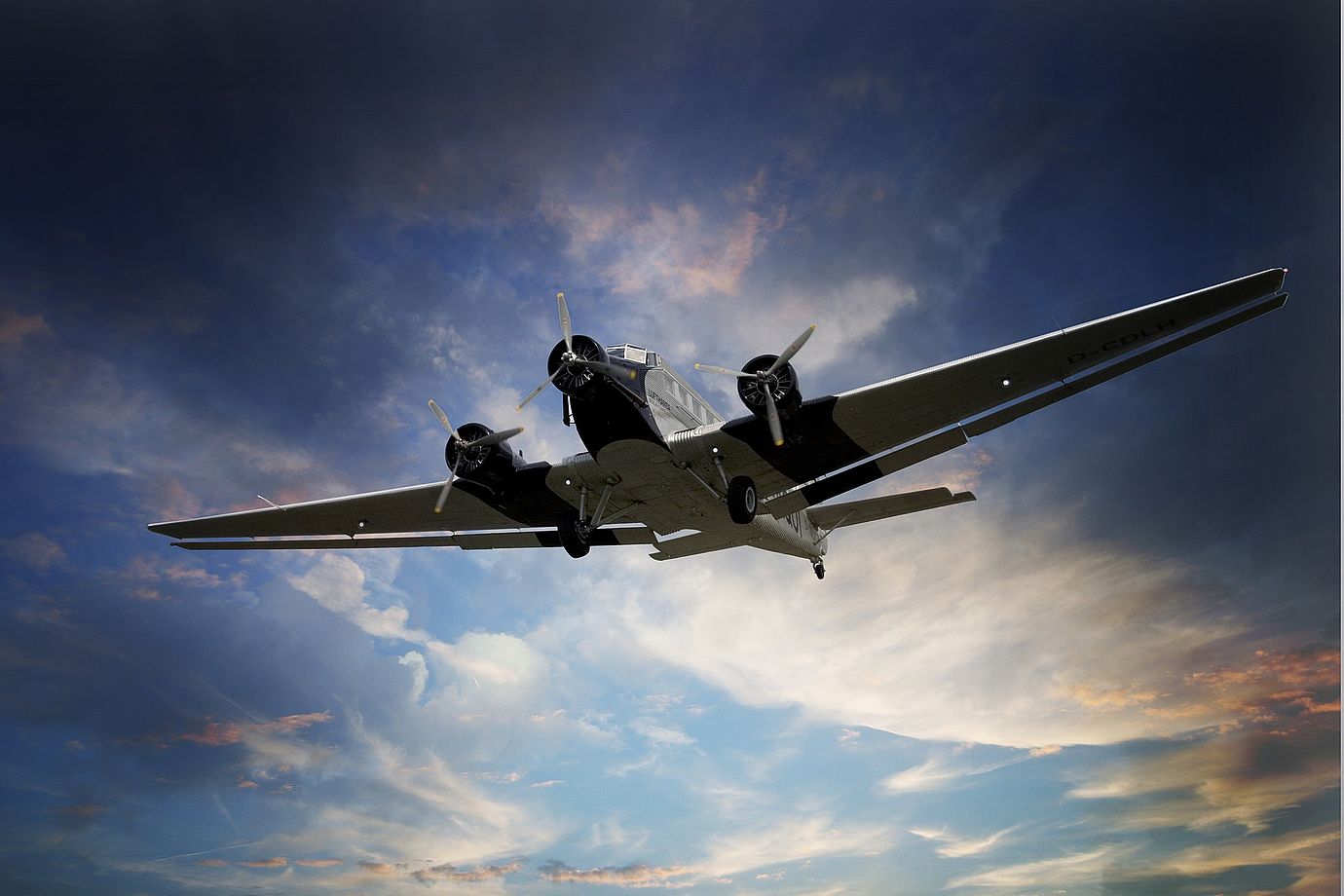If we have to learn from accidents today, it is proof of the failure of safety management with all its components. The final report of the Swiss Transportation Safety Investigation Board (STSB), which has just been made public, reveals this fact in all clarity. It shows impressively that the direct-causal human failure is obviously connected with other things. With the inability of the operating company to keep the risks under organizational control and with the limits of the concept of regulation and governmental supervision. The accident was organizationally imposed.
The Ju Air crash of August 4, 2018 is an unspeakable tragedy. After the appearance of the STSB report, it is not only this, but also a crushing disappointment. A bitter disillusionment that in Swiss aviation, after the serious accidents at the beginning of the millennium, there has again been a failure of the overall concept of safety management with all its components. In aviation, these include a legally required Safety Management System (SMS) at the company level, as well as the 'legislation' and 'regulatory oversight' components. The STSB report sifts through it all with a claim to a holistic view and shows how all failed in their own way.
As with any accident, the temptation is to see the problem only with those directly-causally involved. This then leads to headlines such as: "Pilot error leads to Ju 52 crash". They convey a seductive narrative. The culprits have been found and therefore it can be back to business as usual. Succumbing to this seduction has great advantages. It spares us from debating the underlying complexity and thus makes life easier. It can likewise protect responsible parties and or companies from an unpleasant confrontation. The STSB report does not allow for either - and that is a good thing. It is characterized by a profound analysis that is not satisfied with finding the direct causes. Its systemic approach reveals the unappetizing context that formed the breeding ground for the accident. In doing so, it in no way glosses over the direct causes, which, as always, are to be found in the fallible human being. Because the STSB can deal exclusively with the accident, however, there is much that remains unsaid that has also shaped Ju Air's flight operations over the past many years. In thousands of flying hours, its crew has ensured that countless risky situations have been mastered safely. Historic flying cannot be compared with industrially polished airline operations. For example, it requires its captains to make full use of their decision-making authority time and again. There were certainly many incidents in which they had to go further than what was specified in order to be able to ensure the safety of the flight. The impression given in every accident report that man is a risk factor falls short. Most of the time, he is a safety factor of the first order. That said, it does not absolve him from having to deal critically with himself and with group dynamic phenomena, which unfortunately can go astray. The space given by the marching stop can be used not only to deepen this topic, but also to dedicate oneself to the systemic aspects.
The safety management of Ju-Air
The STSB states that the air carrier's risk management was not able to identify or prevent the deficiencies and risks that occurred during operations and the frequent breaches of rules committed by its flight crews. Contributing to this were violations of mandatory reporting requirements by flight commanders. Neither the Safety Manager nor the Compliance Monitoring Manager were able to fulfill their legally mandated roles. Quite obviously, the dialog between these two safety managers and the risk owners did not work. In addition, in the area of compliance monitoring, legal standards that were actually applicable to Ju-Air were declared inapplicable. The 'check and balance' system, which is prescribed by law and is an important pillar in any safety management, was not properly practiced by the operating company.
In connection with the safety culture, the STSB proves that there was a real 'drift into failure'. According to the STSB, the behavior of the cockpit crew of the accident flight, which was directly responsible for the accident, consisted of flying into the narrow valley at too low an altitude and without the possibility of an alternative flight path at too low an airspeed. The report indicates that it was common practice at Ju-Air, and thus part of the culture, to fly low over landscapes and ridges and close to rock faces. This habit led to the fact that during the accident flight, the risks associated with improper flying into the valley were probably no longer adequately perceived by the crew. In addition, the mentioned habit made it difficult for the 'Pilot Monitoring', in case of possible recognition of the danger, to draw it to the attention of his colleague who was engaged in piloting the aircraft. It can also be assumed that the spectacular but sometimes irregular flight paths were perceived as attractive by the passengers and that the crews felt encouraged in their decisions as a result. According to the report, these habits were so well entrenched that not even the rule and best practice violations were reason enough to be addressed. This is compelling evidence that culture has a much greater impact on employee behavior than guidelines, rules and laws. The importance of safety culture cannot be emphasized enough. Establishing and continuously nurturing it is one of the most purposeful management tasks in a company that must have large risks under organizational control. The STSB report contains a countless number of safety recommendations and safety notes that point to an improvement in culture at the operating company. However, their form illustrates the fact that it is difficult to regulate safety culture and thus make it verifiable. It is clear to the reader what the communitiy already knows: further improvement in safety must be driven with an increased focus on safety culture. Management omissions in the safety culture area are usually not penalized. They are subsumed in corporate risk. However, this does not absolve any manager of moral obligation.
Regulation and government oversight
If one reads the safety recommendations and safety instructions listed in the report, which are addressed to the supervisory authority FOCA (Federal Office of Civil Aviation), it becomes clear that, in addition to the many deficiencies on the part of the authorities, this is not the only issue. Equally problematic is the fact that there is no really suitable regulation for operators of the type of Ju-Air. This circumstance inevitably leads to conflicting goals for the supervisory authority when it tries to interpret a regulation tailored to large operators for a special case. Yet this is what it has tried to do. As it turns out, this approach has not been without consequences. The somewhat cramped approach of the FOCA to comply with the European guidelines of EASA (European Union Aviation Safety Agency) was thus obviously due to the lack of a historic aviation regulation, but certainly also to its lack of competence in vintage aviation, as mentioned in the report. The result was a flee into formalisms.
Based on statements in the report, it can be assumed that the FOCA, in its role as a supervisory authority, perhaps sometimes out of benevolence, has gone out on a limb in certain aspects. But as is now revealed, Ju-Air did not really live up to the trust that this entailed. It was arguably overstretching the small organization. Instead of addressing this overstretch openly, the wrong conclusions were drawn. The narrative became entrenched in the organization about the regulator failing to design viable oversight for the specific operation. According to this narrative, the office got lost and entangled in bureaucracy and formalisms. Thus, oversight was bad-mouthed and lost its rightful importance for safety management. It is a tragedy in itself that both the supervisory authority and Ju-Air failed to untie this knot. However, a solution is crucial for the future of historic aviation in Switzerland.
What was missing?
The STSB report makes clear what was really missing to prevent the accident: an independent look at the management of safety that encompasses all components. The investigating authority has it. Unfortunately, it only comes into play in the event of a serious incident or accident. This report shows that the current concept has major shortcomings that cannot be explained solely by the weakness of the individual links in the chain. Thus, each stakeholder struggles with the problems inherent to its role. The regulator, which cannot really cope with the diversity and size of airline operations. The regulator, which not only has the difficulty of ensuring competence for the diversity of airline operations, but also finds great difficulty in interpreting the rigid set of regulations in a meaningful way. The operating company, which, as in the case of Ju-Air, must find a viable path between enthusiasm and professional flight operations. The crews, who remain challenged in dealing with the many variants of human fallibility. There is a lack of someone on a day-to-day basis who recognizes systemic aberrations in the making, who is not tied to an operational role, and who possesses the kind of independence that the STSB has. We should save the latter for serious incidents. Today's safety management is so advanced in aviation that the reactive part of incident and accident investigation has become less important. In other words, it no longer needs accidents to get better. Rather, it would be a matter of adequately applying today's knowledge. That would already have done a lot.



